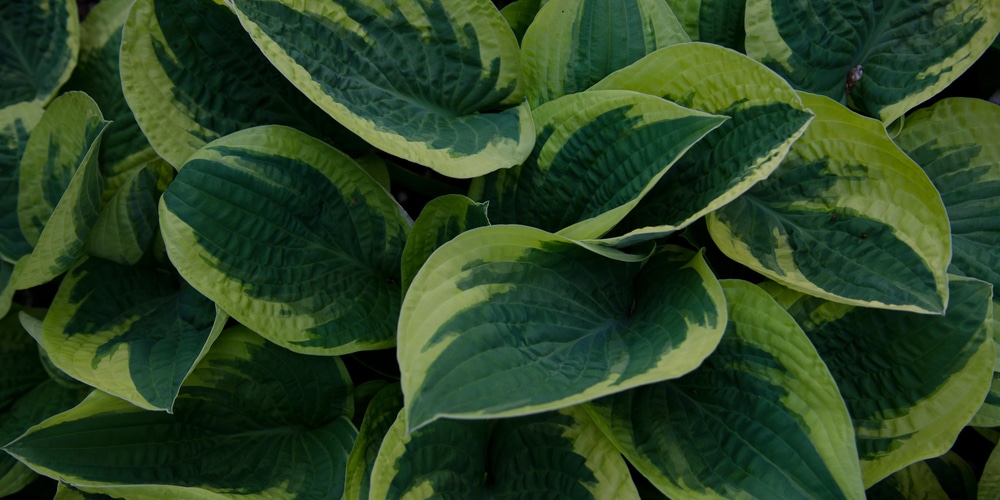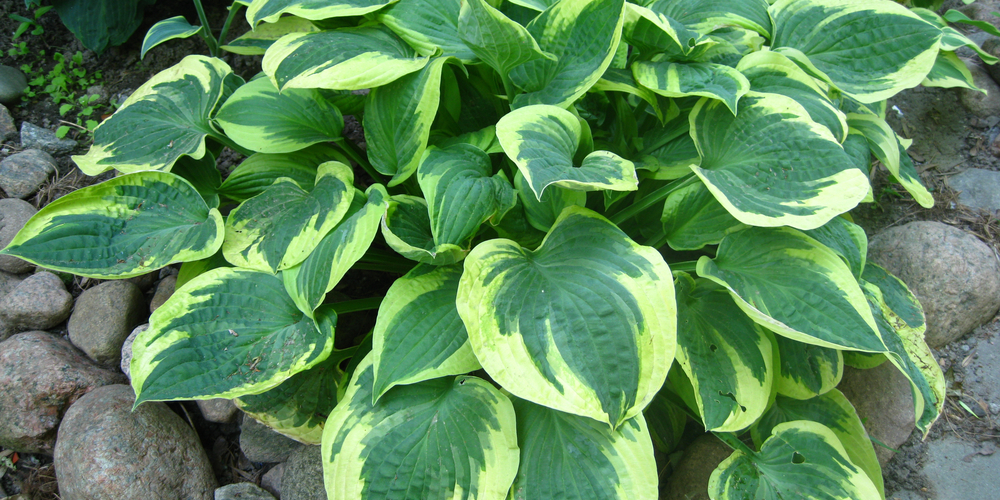Wide brim hostas, commonly known as Plantain lilies, are a type of herbaceous perennial plant that is commonly found in North America, Europe, and Asia. The name “hosta” is derived from the Latin word for “plantain” or “coneflower.”

If you’re looking for a hosta that will really make a statement in your garden, then you need to check out wide brim hosta. This eye-catching plant is known for its large, flared leaves that can reach up to 18 inches wide. And, when it blooms in the summer, its flowers are sure to turn heads.
But what do you need to know about wide brim hosta care? In this article, we’ll give you everything you need to know about caring for your wide brim hosta, including tips on watering, fertilizing, and dealing with pests.
| Botanical Name | Hosta ‘Wide Brim’ |
| Common Name | Plantain Lily |
| Plant Type | Herbaceous Perennial |
| Flower Color | Bell-shaped, white/lavender flowers |
| Size When Mature | 16-24 inches tall |
| Bloom Time | Mid to late summer |
| Sun Requirements | Part to full shade |
| USDA Hardiness Zones | 3 – 9 |
| Soil PH Range | 6.5 – 7.5 |
| Soil Type | Organic-rich, well-draining, sandy, moist soil |
| Water Needs | Medium |
| Native Area | Korea, Japan, China |
What You Need to Know About Wide Brim Hosta
Oftentimes, when people think of hostas, they picture a plant with small, heart-shaped leaves. But wide brim hostas are anything but ordinary. Its variegated foliage and grand size make it a standout in any garden.
Its leaves are truly its most impressive feature. They can grow up to 18 inches wide and are a deep, glossy green with white margins. Additionally, its leaves have a ruffled texture that adds even more visual interest.
In the summer, wide brim hostas will produce large, white, or purple flowers borne on tall stems. These flowers are a favorite among bees and butterflies, so you can expect to see some extra activity in your garden when they’re in bloom. With funnel-shaped blooms that are up to 6 inches long, they’re definitely a sight to see.
How to Care for Wide Brim Hosta
Here’s everything you need to know about growing and caring for a thriving wide brim hosta:
Light
Dappled sunlight or full shade is best for wide brim hostas. They will tolerate some sun in the morning, but it’s essential to protect them from the hot afternoon sun, as this can scorch their leaves.
This is one of the best features of hostas. Most shade-loving plants have boring, green leaves. But the variegated leaves of wide brim hostas add a pop of color to any shady garden.
Water and Soil Needs
Although wide brim hostas are tolerant of a wide range of soil types, they prefer a rich, organic soil that is moist but well-drained.
Water your hosta regularly, especially during hot, dry periods. They do not like to be too wet or too dry. An easy way to check is to stick your finger in the soil. If it feels dry, it’s time to water.
They aren’t tolerant of drought, but waterlogging can also be a problem. Be sure to plant them in an area that has good drainage.
If you live in an area with heavy rains, you may need to take extra measures to ensure that your hosta doesn’t sit in water. One way to do this is to build a raised bed or install drainage tiles. This ensures that the roots of your plant don’t sit in water, which can lead to rot.
Temperature Requirements
If you’re looking for a plant that can tolerate a wide range of temperatures, then the wide brim hosta is a great choice. These plants are hardy in USDA zones 3-9, which means they can withstand cold winters and hot summers.
As mentioned earlier, the key to keeping your hosta happy is to protect it from the hot afternoon sun. If you live in a hot climate, consider planting it on the north or east side of your house, where it will be out of the direct sun.
Alternatively, if you have freezing winters, you may need to take some extra steps to protect your plant. Mulching is a common practice among gardeners in cold climates. This helps insulate the roots of your plant and prevent them from being damaged by the cold.
Fertilizer
The best fertilizer to use on a wide brim hosta is a fully decomposed organic material, such as compost or manure. This will provide a slow release of nutrients that will help your plant thrive.
It’s best to apply fertilizer during the cold winter months when the plant is dormant. This gives the plant time to absorb the nutrients and store them for use during the growing season.
Follow it up with a fertilizer application in early spring, just as the plant is beginning to grow. Ensure the fertilizer is rich in phosphate and nitrogen to encourage vigorous growth.
Common Diseases
One of the unfortunate realities of gardening is that plants are susceptible to diseases. The good news is that a few common diseases affect wide brim hostas, and they can be easily treated.
Common diseases of wide brim hostas include rust, leaf spot, and crown rot. Rust appears as orange or brown spots on the leaves and can spread quickly to other plants in the garden.
Leaf spot appears as small, dark lesions on the leaves and is often caused by too much moisture. Crown rot affects the base of the plant, causing the leaves to yellow and wilt.
To prevent these diseases from taking hold, water your hosta only when the soil is dry to the touch and make sure the plant has good air circulation. If you do see signs of disease, remove affected leaves and dispose of them in the trash.
Wide Brim Hosta Propagation
Looking for a creative way to fill your garden with beautiful hostas? Wide brim hosta can be easily propagated from seed, division, or cuttings.
Propagating from cuttings is the most common method. This technique involves taking a mature hosta plant and carefully slicing off a section of the leaf, including a bit of the stem.
The cut leaf is then placed on top of moistened potting mix or sphagnum peat moss and secured in place with a few small rocks. After a few weeks, roots will begin to form, and new shoots will appear.
Once the new plant is well-established, it can be transplanted to its permanent home in the garden.
Alternatively, if you wish to grow your hosta from seed, you’ll need to start the process in early spring. Sow the seeds on the surface of moistened potting mix or sphagnum peat moss, and place the tray in a warm, sunny location.
Keep the soil moist and wait for the seeds to germinate, which can take anywhere from 2-4 weeks. Once the seedlings appear, thin them out so that each plant has enough room to grow.
Transplant the seedlings into individual pots when they are large enough to handle, and then plant them in the garden in late spring or early summer.
Related Article: Do Deer Eat Hosta Plants?

